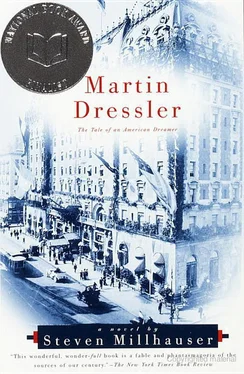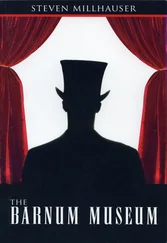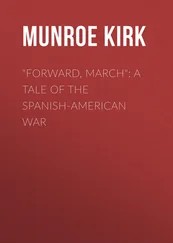While taking note of the unusual living arrangements, and ignoring conventional features such as lobbies, cafeterias, and a very efficient laundry service, many observers preferred to comment on the large amount of space devoted to services and entertainments not generally associated with hotels: the many parks and ponds and gardens, including the Pleasure Park with its artificial moonlight checkering the paths, its mechanical nightingales singing in the branches, its melancholy lagoon and ruined summerhouse; the Haunted Grotto, in which ghosts floated out from behind shadowy stalactites and fluttered toward visitors in a darkness illuminated by lanternlight; the Moorish Bazaar, composed of winding dusty lanes, sales clerks dressed as Arabs and trained in the art of bargaining, and a maze of stalls that sold everything from copper basins to live chickens; the many reconstructions of Hidden New York, including Thieves’ Alley in Mulberry Bend, an opium den, a foggy street of river dives (the Tub of Blood, Cat Alley, Dirty Johnny’s), and bloody fights between the Bowery Boys and the Dead Rabbits, with a nearby shop called Hell-Cat Maggie’s in which one could purchase brass fingernails and have one’s teeth filed to points; the Pantheatrikon, a new kind of theater in which actors on a circular stage surrounded a central auditorium that revolved slowly; a Séance Parlor with heavily curtained windows, a spirit cabinet of black muslin, and a round table at which sat, in a high-necked black dress, the medium Florence Kane; the Salon of Phrenological Demonstrations, presided over by Professor Geoffrey St. Hilaire of Geneva; the reconstruction of a gloomy Asylum for the Insane, with barred windows and shafts of pallid moonlight, in which more than two hundred actors and actresses portrayed patients suffering from more than two hundred delusions of melancholia, including the sensation of being on fire, of having one’s legs made of glass, of being possessed by the devil, of having horns on the head, of being a fish, of being strangled, of being eaten by worms, of having the head severed from the body; the Temple of Poesy, in which twenty-four young women, led by Miss Fanny Parker, all wearing white Grecian tunics and garlands of green satin vineleaves around their heads, recited one after the other, for an hour at a time, twenty-four hours a day, the best-loved poems of Henry Wadsworth Longfellow, James Russell Lowell, Oliver Wendell Holmes, James Whitcomb Riley, John Greenleaf Whittier, and William Cullen Bryant; the Palace of Wonders, in which were displayed a two-headed calf, a caged griffin, a mermaid in a dark pool, the Human Anvil, a school of trained goldfish fastened by fine wires to toy boats in order to enact naval battles, Little Emily the Armless Wonder, the Heteradelph or Duplex Boy with his second torso and his second set of legs, and the infant Adelaide, a four-year-old musical prodigy who played the complete piano sonatas of Mozart on a specially constructed piano with sixty-four keys; the Museum of Waxworks Vivants, in which waxworks, automated waxworks operated by concealed clockwork, and living actors impersonating waxworks represented tableaux such as The Assassination of Abraham Lincoln by the Actor John Wilkes Booth, Gorilla Seizing a Young Girl, Lazarus Rising from His Grave, and Lizzie Borden Murdering Her Father and Stepmother in Fall River, Massachusetts; the Grand Cosmo Cigar Store, composed of many dusky rooms each opening into the next, as far as the eye could see, including a gaslit workroom where cigars were rolled by authentic German cigarmakers, each room containing one or more wooden Indians automated by clockwork and performing motions such as lifting cigars to their lips and blowing smoke rings, raising and lowering tomahawks, spitting tobacco juice into a brass cuspidor, and in one case walking slowly up and down the length of the room with a menacing expression; elaborate stage sets representing Civilizations of the Solar System, such as the white catacombs of the Selenites, the Venusian gardens, and the glowing palaces of the Empire of the Sun; the Hall of Optical Novelties, including Zemmler’s Eidothaumatoscope, a machine for viewing objects just beyond the edges of inserted photographs; a reconstruction of the Heavenly City, based on the reports of more than one hundred mystics; a new kind of department store, designed to disrupt the monotony of displayed merchandise by attractions such as meandering aisles, festive plazas containing striped palmist tents and crystal-gazing booths, and a pygmy village with real pygmies making spears; the Laboratory of Psychical Science, including Professor Blackburn’s Ectoplasmosphere (a large hollow glass sphere for attracting and collecting ectoplasmic projections for scientific analysis), a curtained booth for the study of automatic writing in which Miss Eva put visitors in contact with a Persian spirit called Aouda, and a number of recently invented machines for measuring the claims of spiritualism, such as a Phantothermoscope for registering the presence of departed dear ones and a mahogany Telekabinett in which electrodes were attached to the temples of clairvoyants in order to display their mental images on a ground glass screen; the Cine-Theater, which showed short films (four to eleven minutes) featuring tricks and illusions and provided by Black Star Films, including “The Decapitated Man,” “Mesmer’s Castle,” “Cleopatra’s Resurrection,” and “Tchin-Chao the Chinese Conjuror”; the Phantorama; the Théâtre des Ombres; the Wonders of the Fairy World, a reassembled plot of genuine Irish forest and glade, including trees and turf shipped in an ocean liner and an authentic woodland stream transported in thirty cedar barrels, the whole illuminated by stage lighting that exactly reproduced the conditions of a moonlit summer night, in order to assist the visitor who wished to search for the fairies who had been observed dancing in a ring on that very plot of ground on May 26, 1904, in County Sligo; and the Theatrum Mundi, a globe-shaped chamber in which black-and-white images from every corner of the known world were projected in ever-changing cinematographic montage, showing oncoming trains, the faces of English coal miners, Amazon alligators, cyclists in bloomers, polar bears, the Flatiron Building, a Dutch girl watering a tulip.
Even as journalists attempted to describe the nature of the Grand Cosmo, rumors about the colossal building had begun to circulate in the cheap press, especially rumors about the many subterranean levels, which were said to house darker and more disturbing entertainments as one descended lower and lower. The rumors at first irritated Martin, for hadn’t the Grand Cosmo banished the division between upper and lower that had been a feature of the old-fashioned Dresslers? — but Harwinton was pleased: rumor of any kind was a mark of success, to say nothing of its usefulness as a highly effective and entirely free form of advertisement. Martin, looking at Harwinton’s cool blue blond-lashed eyes, recalled the plump lady in the fountain pen ad, bending over the desk. It struck him that Harwinton himself had probably had a hand in the spread of certain dubious stories, which in any case had begun to lead a life of their own among guests and visitors and the tabloid dailies, and were even being reported, with a certain disdain, by more responsible journalists as evidence of the building’s power to attract attention. It was said that rat-baiting pits flourished in dark corners of the lowest levels, where specially trained rat dogs fought bloody battles against batches of a dozen rats; it was said that a branch of an upstate asylum permitted its inmates to roam the dark in solitary gloom, garbed in the costumes of Napoleon, Marie Antoinette, Jack the Ripper, Edgar Allan Poe. One article reported that the lowest level housed a labyrinthine brothel whose ornate furniture, flowery wallpaper, formidable madam, and thirteen-year-old girls had been smuggled across the Atlantic in the hold of a tramp steamer. Such rumors were to some extent constrained by the very existence of the Grand Cosmo and its verifiable number of subterranean levels, but as if in an effort to evade such constraints, a more fantastic variety of rumor soon began to grow in the rich, shapeless blackness beneath the lowest subterranean level.
Читать дальше












